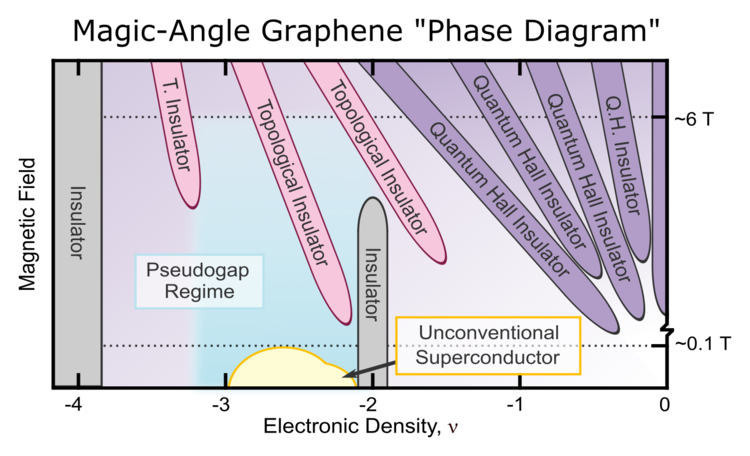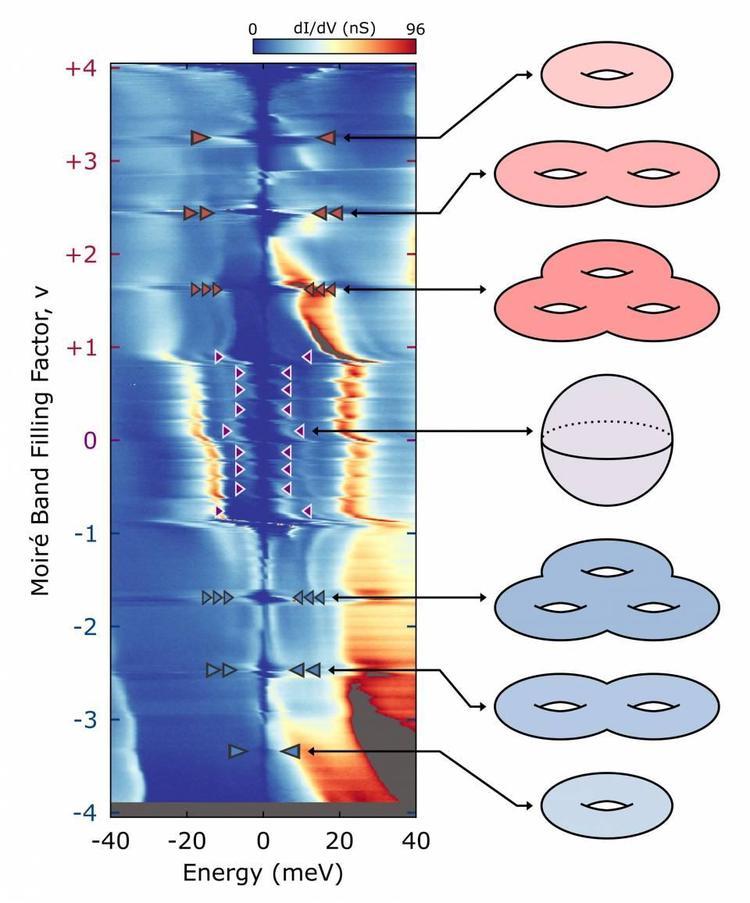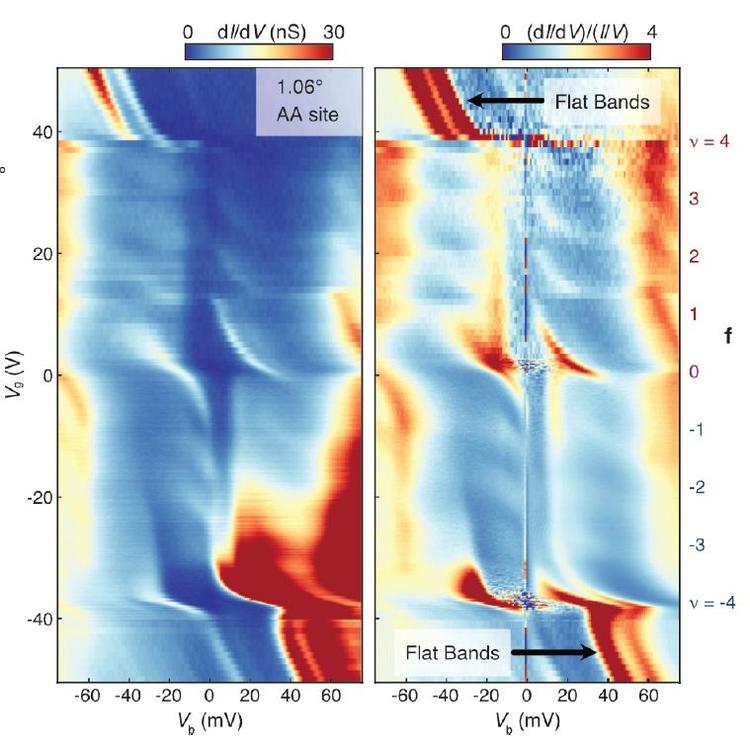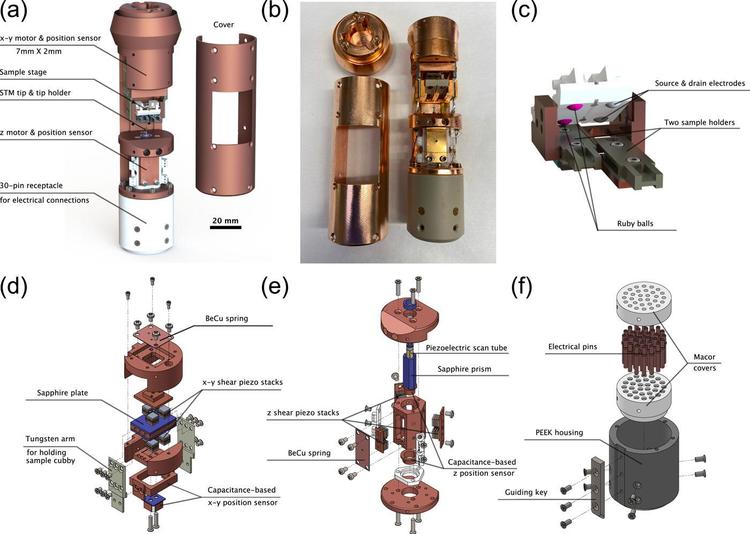2023
Quantum textures of the many-body wavefunctions in magic-angle graphene
K. P. Nuckolls*, R. L. Lee*, M. Oh*, D. Wong*, T. Soejima* et al.
arXiv preprint arXiv:2303.00024 (to appear in Nature) (2023).
Insulators at Fractional Fillings in Twisted Bilayer Graphene Partially Aligned to Hexagonal Boron Nitride
D. Wong*, K. P. Nuckolls*, M. Oh*, R. L. Lee, K. Watanabe, T. Taniguchi, A. Yazdani
arXiv preprint arXiv:2303.08246 (2023)
Strong Inter-valley Electron-Phonon Coupling in Magic-Angle Twisted Bilayer Graphene
C. Chen*, K. P. Nuckolls*, S. Ding, W. Miao, D. Wong, M. Oh, R. L. Lee, S. He, C. Peng, D. Pei, Y. Li, S. Zhang, J. Liu, Z. Liu, C. Jozwiak, A. Bostwick, E. Rotenberg, C. Li, X. Han, D. Pan, X. Dai, C. Liu, B. A. Bernevig, Y. Wang, A. Yazdani, Y. Chen
arXiv preprint arXiv:2303.14903 (2023)
2022
Spectroscopy of twisted bilayer graphene correlated insulators
D. Călugăru, N. Regnault, M. Oh, K. P Nuckolls, D. Wong, R. L. Lee, A. Yazdani, O. Vafek, B. A. Bernevig
Phys. Rev. Lett. 129, 11, 117602 (2022)
2021
Evidence for unconventional superconductivity in twisted bilayer graphene
M. Oh*, K. P. Nuckolls*, D. Wong*, R. L. Lee, X. Liu. K. Watanabe, T. Taniguchi, A. Yazdani
Nature 600, 240-245 (2021). (arXiv PDF)

Superconductivity has been observed at remarkably low carrier densities at partial fillings of the flat bands of magic-angle twisted bilayer graphene (MATBG). Although electrical transport studies have uncovered several features of superconductivity in MATBG that are highly suggestive of an unconventional pairing mechanism, conclusive evidence for any mechanism beyond the Bardeen-Cooper-Schrieffer (BCS) paradigm in this system has required spectroscopic resolution. In this paper, we discuss a series of experiments using the scanning tunneling microscope (STM) that uncover key spectroscopic signatures of unconventional superconductivity in MATBG, which strongly parallel phenomena observed in many known correlated superconductors. With the STM, we find that tunnelling spectra in superconducting MATBG are inconsistent with those of a conventional s-wave superconductor, but rather resemble those of a nodal superconductor with an anisotropic pairing mechanism. Combining STS with point-contact spectroscopy allows us to disentangle superconductivity from a precursor pseudogap phase that persists well-above the critical temperature and critical magnetic field of MATBG. Moreover, this pseudogap regime and superconductivity are both absent when MATBG is aligned with hexagonal boron nitride (hBN), which establishes strong constraints for the existence of these ground states. In total, our findings provide many pieces of evidence for a non-BCS mechanism for superconductivity in MATBG.
__________________________________
2020
Strongly correlated Chern insulators in magic-angle twisted bilayer graphene
K. P. Nuckolls*, M. Oh*, D. Wong*, B. Lian, K. Watanabe, T. Taniguchi, B. A. Bernevig, A. Yazdani
Nature 588, 610-615 (2020). (arXiv PDF)

Interactions between electrons and the topology of their energy bands can create unusual quantum phases of matter. Most topological electronic phases appear in systems with weak electron–electron interactions. The instances in which topological phases emerge only as a result of strong interactions are rare and mostly limited to those realized in intense magnetic fields. The discovery of flat electronic bands with topological character in magic-angle twisted bilayer graphene (MATBG) has created a unique opportunity to search for strongly correlated topological phases. Here we introduce a local spectroscopic technique using a scanning tunnelling microscope to detect a sequence of topological insulators in MATBG with Chern numbers C = ±1, ±2 and ±3, which form near filling factors of ±3, ±2 and ±1 electrons per moiré unit cell, respectively, and are stabilized by modest magnetic fields. We demonstrate that strong electron–electron interactions alone can produce not only the previously observed phase, but also other unexpected Chern insulating phases in MATBG. The full sequence of phases that we observe can be understood by postulating that strong correlations favour breaking time-reversal symmetry to form Chern insulators that are stabilized by weak magnetic fields. Our findings illustrate that many-body correlations can create topological phases in moiré systems beyond those anticipated from weakly interacting models.
__________________________________
Cascade of electronic transitions in magic-angle twisted bilayer graphene
D. Wong*, K. P. Nuckolls*, M. Oh*, B. Lian*, Y. Xie, S. Jeon, K. Watanabe, T. Taniguchi, B. A. Bernevig, A. Yazdani
Nature 582, 198-202 (2020). (arXiv PDF)

Magic-angle twisted bilayer graphene exhibits a variety of electronic states, including correlated insulators, superconductors, and topological phases. Understanding the microscopic mechanisms responsible for these phases requires determination of the interplay between electron–electron interactions and quantum degeneracy (the latter is due to spin and valley degrees of freedom). Signatures of strong electron–electron correlations have been observed at partial fillings of the flat electronic bands in recent spectroscopic measurements, and transport experiments have shown changes in the Landau level degeneracy at fillings corresponding to an integer number of electrons per moiré unit cell. However, the interplay between interaction effects and the degeneracy of the system is currently unclear. Here we report a cascade of transitions in the spectroscopic properties of magic-angle twisted bilayer graphene as a function of electron filling, determined using high-resolution scanning tunnelling microscopy. We find distinct changes in the chemical potential and a rearrangement of the low-energy excitations at each integer filling of the moiré flat bands. These spectroscopic features are a direct consequence of Coulomb interactions, which split the degenerate flat bands into Hubbard sub-bands. The cascade of transitions that we report here characterizes the correlated high-temperature parent phase from which various insulating and superconducting ground-state phases emerge at low temperatures in magic-angle twisted bilayer graphene.
__________________________________
A modular ultra-high vacuum millikelvin scanning tunneling microscope
D. Wong*, S. Jeon*, K. P. Nuckolls*, M. Oh*, S. C. J. Kingsley, A. Yazdani
Review of Scientific Instruments 91, 023703 (2020). (arXiv PDF)

In this paper, we describe the design, construction, and performance of an ultra-high vacuum (UHV) scanning tunneling microscope (STM) capable of imaging at dilution-refrigerator temperatures and equipped with a vector magnet. The primary objective of our design is to achieve a high level of modularity by partitioning the STM system into a set of easily separable, interchangeable components. This naturally segregates the UHV needs of STM instrumentation from the typically non-UHV construction of a dilution refrigerator, facilitating the usage of non-UHV materials while maintaining a fully bakeable UHV chamber that houses the STM. The modular design also permits speedy removal of the microscope head from the rest of the system, allowing for repairs, modifications, and even replacement of the entire microscope head to be made at any time without warming the cryostat or compromising the vacuum. Without using cryogenic filters, we measured an electron temperature of 184 mK on a superconducting Al(100) single crystal.

